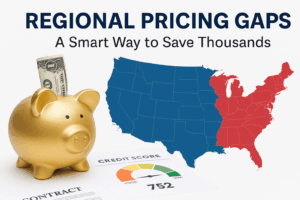Most car buyers walk into a dealership thinking the negotiation ends with the sticker price. But the real margin lives in the fine print. Add-ons like extended warranties, paint protection, and tire packages are where dealers shift the conversation from price to profit. These extras are rarely about value. They are about leverage, psychology, and margin stacking.
Understanding how add-on pricing works is not just about saving money. It is about protecting your loan structure, avoiding inflated interest, and preserving your ability to walk away with equity intact. This post breaks down the tactics dealers use, the behavioral triggers they rely on, and how to regain control before you sign.
The Illusion of Choice
Add-ons are framed as optional. You are shown a menu of extras and asked to choose what you want. But in many cases, those items are already installed. The paint sealant is already applied. The window etching is already done. You are not deciding whether to add them. You are deciding whether to pay for them.
Dealers use this tactic to create a sunk cost narrative. They tell you the work is already completed, then offer a “discount” to make it feel like a win. In reality, you are paying for something you never requested, and the discount is just a margin reshuffle.
Bundling to Obscure Value
Instead of listing each add-on separately, dealers often bundle them into packages with vague names like “Platinum Care” or “Total Protection.” This makes it harder to evaluate individual components and easier to justify inflated pricing.
Bundling also creates psychological resistance. Rejecting a package feels like rejecting safety or long-term value, even if the package includes items you do not need. It is easier to say no to a $495 tire warranty than to a $2,000 protection bundle that includes it.
To counter this, ask for a line-item breakdown. Request the cost of each add-on individually. This forces transparency and gives you the ability to reject specific items without triggering a full renegotiation.
Financing the Extras
Most buyers do not pay for add-ons in cash. They roll them into the loan. This means you are not just paying for the item. You are paying interest on it. A $1,200 warranty becomes a $1,500 expense over a five-year loan. A $900 paint protection package becomes a $1,100 cost once interest is applied.
This tactic works because buyers focus on monthly payments. If the add-on only increases your payment by $20, it feels manageable. But over time, that $20 compounds. You are financing a margin, not a necessity.
Before agreeing to any add-on, calculate its total cost over the life of the loan. If it does not hold value beyond the financing term, it is not worth including.
Anchoring and Timing Pressure
Dealers introduce add-ons after you have mentally committed to the car. You have chosen the model, agreed on the price, and imagined yourself driving it. At that point, rejecting extras feels like backtracking. It creates friction.
They also present these options during the final paperwork phase, when buyers are fatigued and eager to finish. This is not accidental. It is designed to reduce resistance and increase acceptance.
To protect yourself, prepare in advance. Know which add-ons you want, which ones you do not, and which ones you are willing to negotiate. Treat the add-on phase as a separate transaction, not a footnote.
The Role of Dealer Incentives
Add-ons are not just upsells. They are strategic revenue channels. Dealers often earn higher margins on add-ons than on the vehicle itself. In some cases, finance managers receive bonuses based on how many warranties or protection plans they sell.
Dealer incentives from third-party providers also play a role. If a dealership sells a certain number of service contracts or coverage plans, they receive backend rebates or tiered payouts. This means the push for add-ons is not just about your deal. It is about their quota.
Understanding this dynamic helps you negotiate from a position of clarity. You are not rejecting value. You are rejecting margin padding.
Add-ons are not part of the car. They are part of the dealership’s pricing strategy. If you treat them as a separate negotiation, you regain control. Ask for itemized pricing. Refuse pre-installed charges. Calculate long-term financing impact. And most importantly, separate emotional commitment from financial logic.




